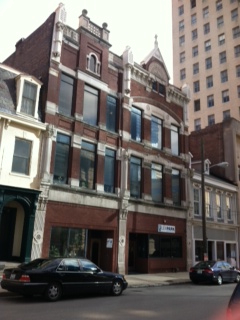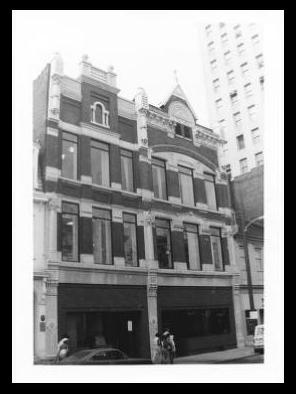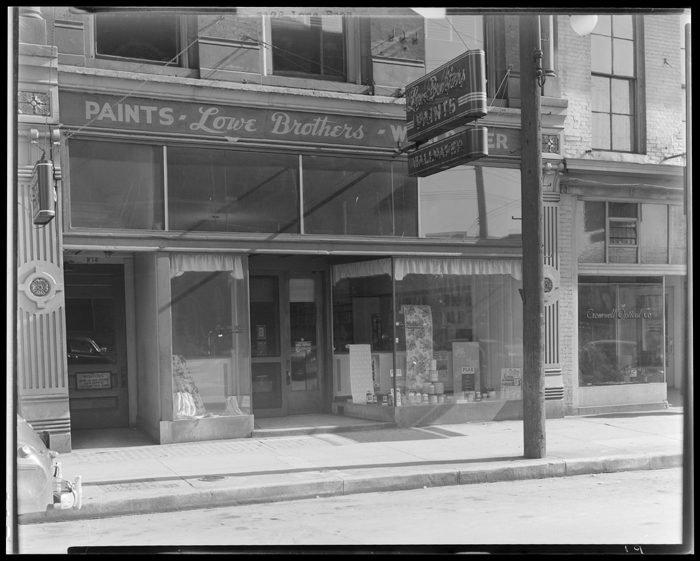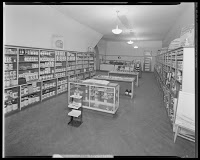 |
| Berkley, Guthrie & Watson Building (2012) Photo by Jason Sloan |
 |
| Berkley, Guthrie & Watson Building (1983) Photo by Dick DeCamp |
As might be guessed, 114 North Upper wasn’t always the office of those who issue and process Lexington’s parking tickets. At one time, you could walk out with more than just a receipt for a ticket. In the National Register nomination form for Lexington’s Downtown Commercial District, preservationist Dick DeCamp called the Berkley, Guthrie & Watson Building “one of Lexington’s most important surviving buildings of that period [Victorian].”
 |
| Lowe Brothers Company (1944); Photo: Robert J. Long |
The building can be found in “Jordan’s Row,” which was named after early owner John Jordan, Jr. The Berkley, Guthrie & Watson Building, situated at 114-116 North Upper, was designed by prolific architect Herman (H. L.) Rowe in the high Victorian Gothic Style. Construction commenced in 1885 by Lexington builder and stonemason G. D. Wilgus, one of the largest contractors in the area at the time.
Noticeably, much of the historic exterior integrity remains from the original build, while the interior underwent major renovations in the mid-1970s.
 |
| Lowe Brothers Company Interior (1944) Photo by Robert J. Long |
Originally, the building was constructed for the law firm Berkley, Guthrie & Watson. The firm owned the building until a series of events affecting the firm: John Berkley left; Henry Guthrie shot himself (“presumably to death,” as DeCamp notes); and James Watson ultimately sold the building in 1916. Since then, the building has been occupied by a diverse group of tenants. From 1925-1937, a furnishing and stationary store, Wrenn and King, occupied the site. Lowe Brothers’ paint and wallpaper called 114-116 North Upper home from 1938 until the 1960s. By the 1960s/70s, the deteriorating structure had become known as the Lowe Building.
In 1975, Garvice D. Kincaid bought the building and renovated both the exterior and interior. Lexington’s Parking Authority’s director Gary Means found the building perfect for his growing agency when it moved into the building in late 2008. LexPark has found an adaptive use that respects both the commercial history of the building, maintains the historic street view, and provides an attractive, effective work space for Lexington’s parking ticket denizens.
For more information see:
National Register (Downtown Commercial District, 1983)
LexPark
